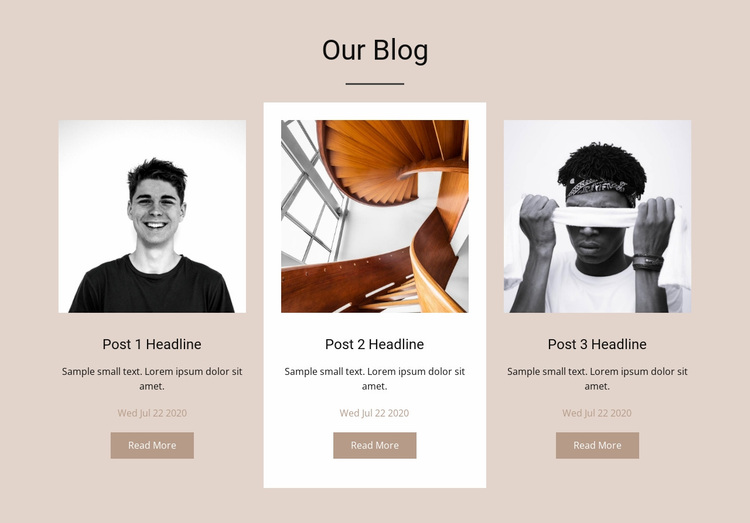Expert Website Design Services to Build a Stunning Online Presence
Expert Website Design Services to Build a Stunning Online Presence
Blog Article
Top Tips for Developing an Impactful Internet Site Style That Converts
To attain this, one must consider a variety of elements, consisting of comprehending the target audience, prioritizing individual experience, and optimizing for mobile systems. The critical usage of compelling call-to-actions and a distinct aesthetic hierarchy plays an essential role in leading users through their journey.

Understand Your Target Market
Comprehending your target audience is basic to effective web site layout, as it lays the groundwork for creating an appealing customer experience. Recognizing who your individuals are, including their demographics, choices, and habits, allows designers to tailor the web site's content, design, and capability to satisfy particular needs.
Carrying out thorough market study is crucial in this procedure. Surveys, meetings, and analytics can supply valuable understandings right into customer expectations and pain points. By assembling this data, designers can create individual identities that represent different segments of the target market, guaranteeing that layout choices are educated and relevant.
Furthermore, understanding the target market aids in selecting proper layout elements such as color plans, typography, and images that resonate with individuals. A site that speaks directly to its target market fosters a sense of link and trust fund, encouraging longer brows through and greater conversion rates.
Inevitably, a user-centered approach to website style not only improves customer satisfaction yet additionally sustains business purposes by driving involvement and commitment. By focusing on the demands and preferences of the target audience, a website can effectively offer its purpose and attain desired end results.
Prioritize Individual Experience
To improve the overall efficiency of an internet site, focusing on individual experience (UX) is important (Website Design). A properly designed UX makes certain that visitors can navigate the site easily, find details quickly, and involve with content meaningfully. This causes enhanced user contentment and higher conversion rates
Begin by implementing intuitive navigating. Menus must be logically structured, allowing users to find key areas of the website with marginal effort. Uniformity in design components, such as shade systems and fonts, fosters familiarity, which is critical for preserving customer involvement.
Additionally, consider the filling rate of your site. A delay of simply a few seconds can result in significant drop-offs, as users are less likely to await a slow-loading web page. Simplifying images and optimizing code can enhance efficiency and preserve visitors.
By focusing on user experience, you not only produce an extra satisfying environment for site visitors yet additionally strengthen your brand name's trustworthiness. Inevitably, an emphasis on UX is a financial investment in the long-term success of your internet site.
Optimize for Mobile Devices
Enhancing for smart phones is important in today's electronic landscape, where an increasing variety of individuals accessibility internet sites via mobile phones and tablets. A mobile-friendly style not only boosts individual experience but likewise plays a significant duty in boosting internet search engine positions. To accomplish this, it is important to adopt a receptive layout that instantly adapts to different screen sizes and orientations.

Packing speed is another essential factor; mobile users are generally much less individual and anticipate rapid accessibility to info. Optimize photos and take advantage of web browser caching to improve efficiency. Lastly, test your web site on multiple tools and screen resolutions to recognize and correct any type of possible functionality issues. By focusing on mobile optimization, you make certain that your web site continues to be competitive and successfully involves a broader audience.
Usage Compelling Call-to-Actions
An internet site's effectiveness typically pivots on its ability to assist site visitors toward wanted activities, making compelling call-to-actions (CTAs) crucial components of layout. CTAs act as the crucial points that direct individuals to involve with the site, whether that indicates purchasing, registering for an e-newsletter, or downloading a resource.
To produce efficient CTAs, clearness is extremely important. Use succinct language that plainly connects the activity you want the user to take. Phrases such as "Get going," "Register Free," or "Store Now" not only convey urgency but additionally remove obscurity. The positioning of CTAs is just as vital; they should be tactically positioned throughout the website to ensure they are easily visible, particularly in high-traffic locations.
Moreover, the design of CTAs need to stand Recommended Site out without being obtrusive. Use contrasting colors and clear fonts to guarantee they catch attention. Additionally, consider using directional cues, such as arrows or photos, to lead users toward these switches. By concentrating on these elements, companies can dramatically improve individual engagement, driving conversions and ultimately accomplishing their website's objectives.
Focus on Visual Power Structure
Efficient site style depends greatly on a well-structured visual power structure that guides customers with content effortlessly. By organizing components in a way that prioritizes details, designers can improve customer experience and facilitate decision-making. This entails utilizing dimension, shade, contrast, and spacing tactically to accentuate the most essential components of a web page.
The usage of larger font styles for headings and subheadings develops a clear distinction in between various sections, allowing individuals to check material effortlessly. Furthermore, More Help utilizing different colors for switches and calls-to-action can record customer attention and motivate communication. Whitespace is an additional essential component; it stops mess and allows individuals to concentrate on essential messages without diversions.
Photos and graphics should complement the text while likewise adhering to the well established pecking order, enhancing the total message (Website Design). Uniformity in layout elements, such as color design and typography, further strengthens the visual hierarchy, making navigation intuitive

Conclusion
In conclusion, reliable web site design necessitates a thorough understanding of the target audience, prioritization of user experience, and mobile optimization. Eventually, a well-executed website style serves as an important part in driving user activities and achieving service objectives.
Report this page